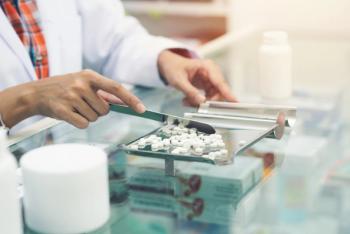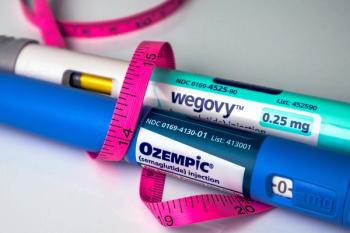
Q&A: A Closer Look at the Current State of Biosimilars in the Drug Market
Steve Callahan, Senior Director of Advisory & Insights at MMIT, sat down with Drug Topics to discuss industry trends behind biosimilars.
Compared with other classes of prescription drugs, biosimilars are a rather new addition to the drug supply chain. In 2015, the FDA approved its first biosimilar in the US for the oncology drug filgrastim-sndz (Zarxio). Since then, the FDA has approved an additional 60 biosimilars, with the most recent receiving approval in October.1 Now with more approvals coming in and legislation that could impact prescription drug pricing immensely, pharmacies should understand the potential impact biosimilars can make on patient populations and communities.
“Over time, we have seen that the price of biosimilars have come down, and that does end up saving patients money because these are more complicated products,” said Steve Callahan, Senior Director of Advisory & Insights at MMIT.
He recently joined Drug Topics to discuss biosimilars. From real-world data that his company has collected to inform their customers to the market insights that support the dispensing of biosimilars, he went into depth on one of the pharmaceutical market’s newest products.
Stay tuned for more content from our interview with Callahan, discussing biosimilars amidst the Inflation Reduction Act of 2022 and what it means for pharmacies going into 2025 and beyond.
READ MORE:
Drug Topics: Can you give us a brief explanation of what biosimilars are?
Steve Callahan: Looking at the pharma industry, I think we've heard of generics before. A product is available on the market. Eventually the patent runs out and a generic product becomes available that's a lot less expensive. With biologics, those are treatments that are just a lot more complicated than the other products. We might call the other products small molecules. You can make those in a lab with chemistry, etc, but with biologics, you actually need some type of organism to synthesize them because they are proteins. You can't just create one by mixing chemicals. You actually have to have a process that creates this protein structure, and it has to be a reliable process. All of the products that come out are similar and will have similar effects.
Biosimilars are kind of comparable to generics, but it's different. With generics, the molecule structure has to be the same, but with biosimilars, the protein structure has to be the same. There's a lot more that goes into it. That's kind of what the biosimilars are. It's comparable to a generics coming out for small molecules, except it comes out [in] biologics when their exclusivity patent expires.
Drug Topics: What types of prices have patients using biosimilars seen in the past, and how is that expected to change in the future?
Steve Callahan: There's been a change in single biosimilars since they first came out. In the grand scheme of health care, biosimilars still are new. The first biosimilar was approved in the US in 2015, so we're looking at just about 10 years of them being available. When the first biosimilars came out, there was a big misalignment for the anticipated pricing that the insurance companies thought they were going to get versus what was there. In speaking to a lot of these people that make these decisions at insurance companies, they were anticipating they were going to see steep, steep drop-offs in pricing, similar to what you see with generics, but that wasn't the case because a lot goes into creating a biosimilar; it takes a lot longer. It's like $100 million versus maybe $4 million or $5 million for generics, so much more expensive, and the process to make them is a lot more expensive. While the first biosimilars did come out slightly lower than the reference product or the original biologic product, it wasn't at that 90% discount that a lot of the insurance companies were expecting. That was a big hurdle that I think some early biosimilars had was just kind of getting more alignment from insurance companies on the pricing.
Over time, we have seen that the price of biosimilars have come down, and that does end up saving patients money because these are more complicated products. A lot of times, the insurance companies have them on a specialty tier. With specialty tiers, those are generally a copay, so a patient has to pay a percentage of the drug’s price. Because the price of biosimilars has started to come down, that relates to more patient savings because their coinsurance rate is off of a lower price. Additionally, a lot of insurance companies are creating multiple tiers. In the past, there might just be a single specialty tier, and maybe the co-insurance rate was 20% or 30%, and it was the same for all specialty products. Now, there’s multiple specialty tiers which actually have lower coinsurance rates for patients, so they might have an option of paying a 10% coinsurance for the price for a preferred product, versus maybe a 20% to 33% for a nonpreferred [product]. Just the fact that there's also more options for lower coinsurances for patients and lower prices overall have helped patients pay a lower out-of-pocket rate.
Drug Topics: As a representative of MMIT, what are you doing right now to help dispensers that specialize in biosimilars?
Steve Callahan: Something that we've really started to put a lot of effort in is just understanding the real-world data using real-world data sources. Looking at claims data is a big one, and really just trying to understand a lot of nuances for different indications. What has been successful for other products [that] come to market? What were some of those strategies? What was the uptake of use that other products have seen? [We’re] just really trying to understand the changes in the market dynamics that led for some products to be successful. It may be some that could have had a better launch. I think that area is where [we’re trying to be] able to understand the real-world data sets so that we can quantify that into something insightful and strategic.
We also do a lot of primary research, so we talk a lot with members, different health care stakeholders. We talk with insurance companies, or we call them payers. We talk with practice managers, we talk with different types of health care professionals, and just trying to understand all the different nuances within the space. [We’re] trying to understand what the different payers are looking for; what it would take for a health care provider to want to prescribe a different product or biosimilar.
READ MORE:
Don’t get left behind: Sign up today for our
Reference
1. Biosimilar Product Information. FDA. Published October 18, 2024. Accessed November 26, 2024. https://www.fda.gov/drugs/biosimilars/biosimilar-product-information
Newsletter
Pharmacy practice is always changing. Stay ahead of the curve with the Drug Topics newsletter and get the latest drug information, industry trends, and patient care tips.




